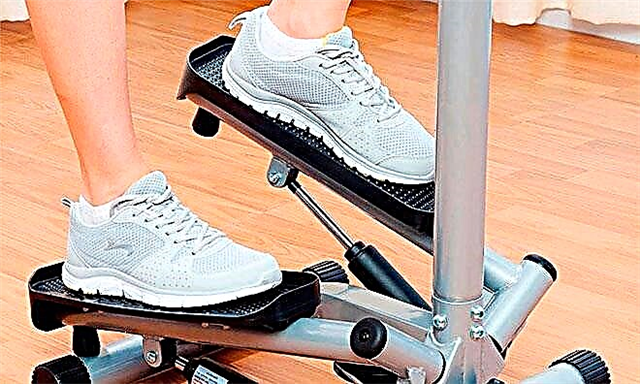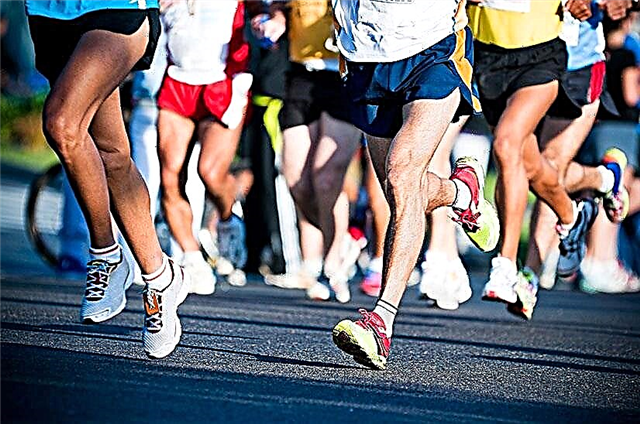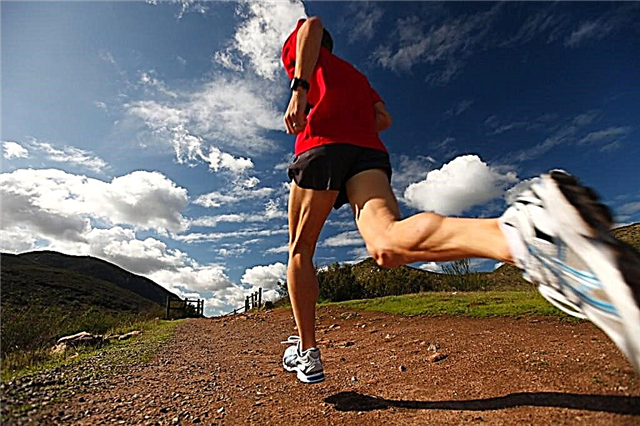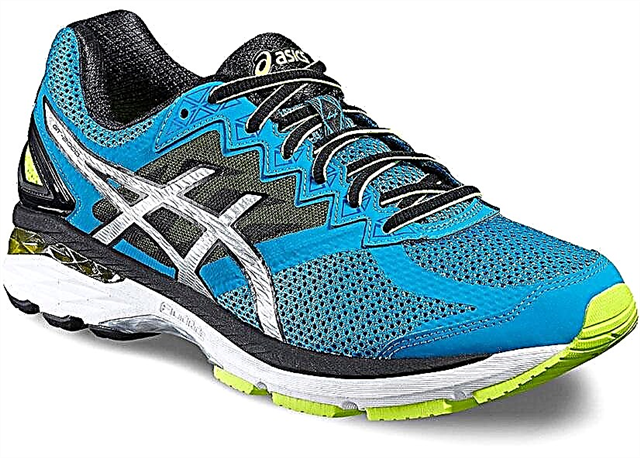Running endurance plays an important role - endurance athletes perform better. Consider the physiological aspects of endurance.

Varieties of endurance
There are two types of endurance:
- aerobic;
- anaerobic.
There is also another classification:
- special;
- general.
Aerobic

This is cardiovascular endurance. It is the ability to exercise continuously for a long period of time without fatigue.
The level of aerobic endurance is different for each person. It depends on the amount of oxygen that can be transported by the body for working muscles through the lung and blood system. And the efficiency of the muscles depends on the amount of oxygen.
Aerobic endurance is one of the main ingredients for success in many sports. In some sports such as running and triathlon, aerobic endurance is the most important attribute. In many other sports, including football, good endurance is also very important.
There are many ways to improve your aerobic endurance. Running and cycling are among the main types of physical activity used to improve performance. In many cases, the regimen is not that important; it is more important to train at the correct intensity for a long time.
Aerobic endurance can be improved by doing any kind of aerobic exercise. These exercises are usually done at moderate intensity for an extended period. The main goal of such training is to increase the heart rate over a period of time. As a result, oxygen is used to burn fat and glucose.
Anaerobic
Anaerobic endurance is the ability to perform physical exercise in the so-called maximum training regime.
Ways to increase your running stamina

There are many ways. Let's consider the most popular ones.
Increasing distance
There is a rule according to which you can increase the distance by 10% every week. Most athletes use this method to increase their training distance.
But this rule cannot be considered universal. There are many cases where the distance needs to be increased by 5% or less. Also, some professional athletes can afford to increase the distance by 10% or more.
Instead of using this rule, you can use another method. Let's look at a way that will allow:
- increase endurance;
- recuperate in time.
Your distance

During each run, be sure to monitor your feelings. If you run 3 km and feel comfortable at the same time, then this distance is basic for you. During such a run, you feel comfortable and light.
At the same time, the workout should not be too easy or difficult. This indicator is the starting point for increasing the distance. This is a real (work) load for you.
Now that you know your actual workload, you can plan to increase or decrease the distance. For example, you are injured. In this case, you need to slightly reduce the distance (10-30%). In the mode of preparation for the competition, you can increase the distance (5-20%).
This concept will help you prevent serious injury and increase your stamina.
Adaptation weeks

Adaptation weeks help to increase the distance significantly. During these weeks, you need to gradually increase the load. For example, 1-2% per day. In the long term, this will improve results.
This type of exercise adaptation is beneficial for all athletes.
Benefits:
- reduction in the number of injuries;
- allows you to recover well;
- the body has time to adapt to the load.
Recovery week (every 4-6 weeks)
For running fans this week will seem like hell. But it's worth it.
Periodically, you need to reduce the intensity of training in order to enable the body to recover and adapt. For example, if you are running 3 km, then the distance can be reduced by 10-30%. Reduce training intensity gradually. That is, on the first day 4%, the second 7%, etc.
Of course, weeks of recovery are only needed during hard training. If your workouts are going on as standard, there is no need to spend weeks of recovery.
Ragged rhythm

This method was invented by Craig Beasley, a famous Canadian marathon runner.
Craig Beasley's recommendations:
- run at maximum speed (30 seconds);
- walking (5 seconds);
- repeat the cycle eight times;
- in the future, you need to gradually increase the load.
Interval running

What is interval running? This is when exercise modes alternate. Also, the athlete has more time to recover. For example, an athlete runs for 2 minutes at a speed of 10 km / h (intensive mode), and then 5 km / h (takes a breath).
Studies show that workouts in which you alternate periods of high intensity with low intensity have the following benefits:
- increased endurance;
- accelerating the process of burning calories.
- e increase in muscle mass.
The length of the intervals and the frequency of training are determined by:
- quality of training;
- personal preference;
- the physical parameters of the athlete.
Interval training will work for different athletes. An athlete with more slow twitch muscle fibers will generally do better at longer intervals.
Conversely, an athlete with a higher percentage of fast twitch muscle fibers will train at shorter intervals.
Consider a workout:
- 5 minutes warm-up;
- 30 seconds increase the pace (70% of the maximum effort) ... 2 minutes decrease the pace;
- 30 seconds increase the pace (75% of the maximum effort) ... 2 minutes decrease the pace;
- 30 seconds increase the pace (80% of the maximum effort) ... 2 minutes decrease the pace;
- 30 seconds increase the pace (85% of the maximum effort) ... 2 minutes decrease the pace;
- 30 seconds increase the pace (90% of the maximum effort) ... 2 minutes decrease the pace;
- 30 seconds increase the tempo (100% of the maximum effort) ... 2 minutes decrease the tempo;
- 5 minutes of light jogging and stretching. When you stretch, your muscles expand. This promotes the supply of nutrients.
Changing your running cadence during exercise
Many experts advise against changing your running cadence while exercising. However, with interval running, you cannot do without changing the rhythm.
Long Distance Pace Running

This is running at the level of the anaerobic threshold. Pace running is very popular. Such training can significantly increase the anaerobic threshold. Also, tempo running will improve your ability to maintain pace.
Example: ANP pace 30-40 minutes.
Jumping training
Each of us jumped rope in childhood. But what few people know is that this fun activity is great for improving endurance. Of course, you can jump not only on the rope.
There are such jumping trainings:
- high bounces
- jumping from foot to foot;
- jumping over barriers;
- jumping on two legs;
- split, etc.
Tips for beginners

There is no one size fits all advice. The effectiveness of training depends on many factors:
- body structure;
- experience, etc.
It is impossible to increase endurance without the right technique. This is the foundation. You can judge the current running technique by the following questions:
- Have you experienced joint pain (usually in your knees or ankles), especially when running on hard surfaces?
- Have you experienced lower back pain?
- Have you encountered shoulder pain
- Do you feel sharp pains in your lower left / right abdomen?
- Is your breathing chaotic during exercise?
If your answer to any of the above questions is yes, you should improve your current running technique and take corrective action.
Additional tips:
- Warm up at the beginning of your workout. It will warm up your muscles and prepare your body for physical activity.
- Be sure to drink plenty of fluids while exercising.
- Cover yourself according to the weather.
- Use special shoes;
Athletes need to develop endurance for best results. This can be done in various ways. But, don't forget about the rules. The main thing is to monitor your heart rate. You also need to monitor the sensations. This way you won't overtrain. By following the correct running technique and safety rules, you will significantly increase your endurance.









